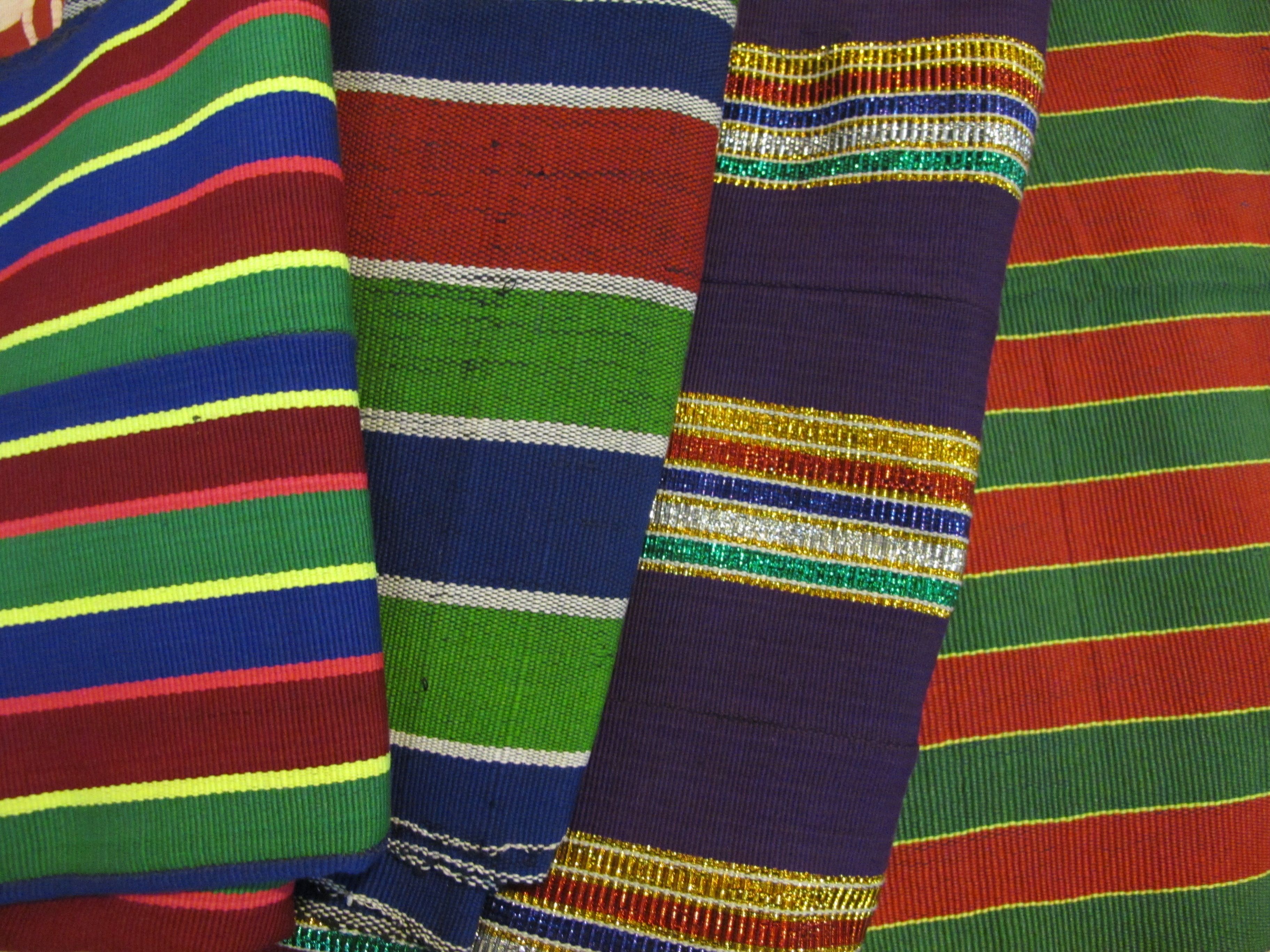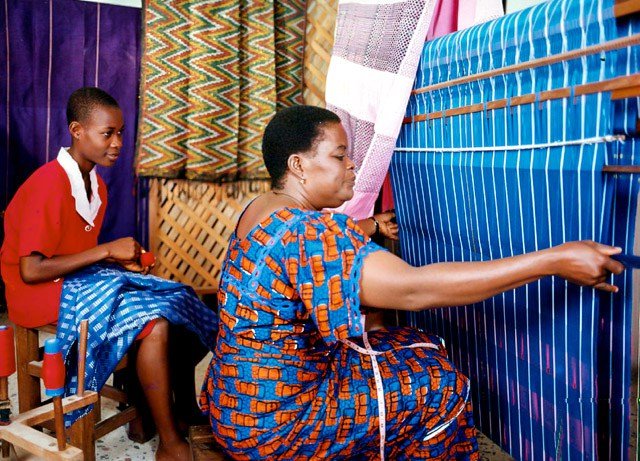Aso Oke
Aso Oke (Yoruba: Aşǫ okay, pronounced ah-SHAW-okay)
This is a hand-woven cloth woven by the Yoruba people of western Nigeria. Aso okay means top clothin the English language. Usually woven by men, the fabric is used to make men's gowns, called Agbada, women's wrappers, called iro, and men's hats, called fila.

It comes from the Yoruba culture in Ondo, Oyo, Ogun, Ekiti, Lagos and the Osun states in southwestern Nigeria.
The way to make Aso-oak canvas remained the same for centuries, but new techniques and production methods have been taken to eliminate the weight and thickness of the Aso-Oke cloth and make it more accessible for comfortable wearing.

Aso-Oke is a short form of Aso Ilu Oke, also known as Aso-Ofi, which means clothing from the country. It is the traditional wearing of the Yoruba's (the tribe of the southwest in Nigeria, Africa). The Yorubas are the second largest tribe in Nigeria to the Northerners. Aso-Oke is a cloth that is carried by Yoruba on special occasions, usually for lovers, celebrations, involvement, aftercare and other important events.

The beauty of Aso-Oke is more pronounced than it is taken as Aso-Ebi (group of people eg friends, families e.t.c). Tissue fabric (Aso-Oke) began among the Yoruba's centuries ago, but mainly among the Iseyin (Oyo state), Ede (Osun state) and Okene Kogi state. The fiber used to weave is either locally obtained or from neighboring countries (northern parts of the country).

Types of aso oke
Other ways designers made this old traditional cloth more modern is to structurally manipulate and combine animal and flower motives in certain forms of grids and geometry, suitable for computer design applications. " The basis of more traditional motives would arise from fables and folklore.
Sanyan type: woven anaphe wild side and cotton yarns
Alaari type: woven with synthetic or locally grown cotton and shiny wires, sometimes with perforated patterns
Etu-type: wearing dark indigo colors with small white stripes noticed for their simplicity.
Also so much fabric is often worn with aran, a brown velvet with concentric designs.
